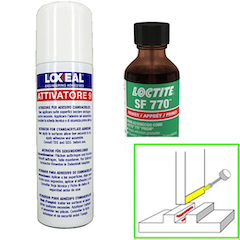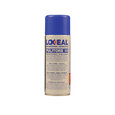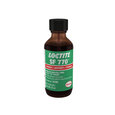Why use a surface modifier?
Surface modifiers clean and prepare a surface for the application of an adhesive. The removal of organic and inorganic contaminants from the surface substrate is essential in ensuring optimal bond and long service life for the thread sealant or threadlocker. Read our sealing and adhesives overview article for all different types of sealants and adhesive products.
- A good surface cleaning product eliminates contaminants like oil, dust, grease, and other chemicals from the surface.
- A good preparation product eliminates the oxidants from the substrate and increases the adhesive bonding to the surface.
View our online selection of surface modifiers!
Cleaning
Surface cleaning is an important step in the application of an adhesive. The primary purpose of the surface cleaning process is to remove the unnecessary contaminants from the surface. The contaminants can include oxides, oil, grease, dust, mold, organic contaminants, etc. Various industrial processes (cutting, sanding, etc.) can leave contaminants like dust, soot, chemicals, and fluids on the surface. These contaminants negatively affect the bond strength of the adhesive and the two connecting surfaces. Therefore, before applying an adhesive, it is important to clean the surface. Most common cleaning agents are aqueous-based or solvent-based. The different types of surface cleaning products include:
- Surface cleaner: Dissolves or removes the fine particles from the bonding surface. It is mostly acetone-based and ideal for contaminants like grease, oil, resins, chips, lubricating fluid, etc.
- Industrial cleaner: De-greases the surface and increases the bonding of the adhesive. Solvent-based industrial cleaners are suitable for metal, glass, rubber, plastics, or painted surfaces.
- Electric contact cleaner: Cleans contacts, potentiometers, relays, fuses, and connection elements. The application of electric contact cleaner leaves water repellent film on the contact to prevent moisture retention.
- PVC cleaner: Cleans PVC fittings, pipes, and components.
- Adhesive and sealant remover: Removes thread sealant, threadlocker, and adhesives present on the surface.
- Universal cleaner: A versatile cleaner for a wide range of industrial cleaning applications. It removes grease, oil, dirt, lubricants, light carbon, food stains, wax, food stains, etc. A typical application may include use in motors, valves, bearings, asphalt, carpets, windows, etc.
- Hand cleaner: A water-free safe hand cleaner. It cleans oil, tar, paint, grease, resins, etc.
Preparation
Surface preparation improves the wetting and adhesion properties of the surface before the application of the adhesive. Surface preparation aims at avoiding possible chemical contamination, mechanical and chemical effects of abrasion, and improving the durability of the adhesive bond. In the long-term, the surface preparation process reduces the cost associated with repairs and inspections. Surface cleaning is done before the application of surface preparation products. Some common types of surface preparation products are as follows:
- Surface primer: Improves the adhesion of instant adhesives. Ensure that the chosen primer is suitable for the given surface.
- Surface activator: Acts as an adhesion promoter. It optimizes the hardening and bonding of the adhesives to the surface while decreasing the blooming. It is suitable for applications that require rapid hardening and where aesthetics of the adhesive is important.
- Adhesive activator: Speeds up the hardening of instant adhesives and is used on porous surfaces.








